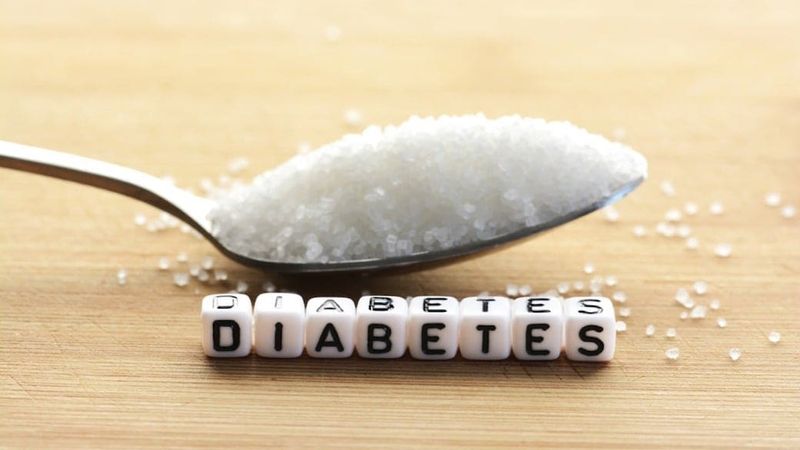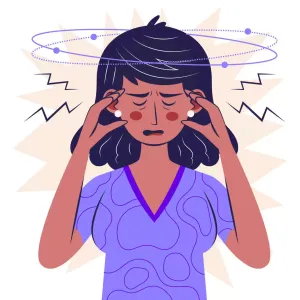

Our Review Process
Our articles undergo extensive medical review by board-certified practitioners to confirm that all factual inferences with respect to medical conditions, symptoms, treatments, and protocols are legitimate, canonical, and adhere to current guidelines and the latest discoveries. Read more.
Our Editorial Team
Shifa Fatima, MSc.
Author
Dr. Apoorva T, MHM.
MEDICAL ADVISOR
Type 2 Diabetes - Causes, Prevention & Treatment
Type 2 Diabetes is a chronic and lifelong condition that is characterized by the inability of the cells in your body to respond adequately to insulin; the hormone that brings glucose from the blood to the cells where it is used for energy. Due to the inability of the cells to utilize the sugar in the insulin, blood sugar levels rise and the body is forced to rely on alternative energy sources in muscles and internal organs, and other parts of your body. Read more about type 2 diabetes treatment and prevention below. Also know about yoga for type 2 diabetes
Table of Contents
What are the Symptoms of Type 2 Diabetes?
The problem with Type 2 Diabetes is that it is not always easy to detect as symptoms may be unnoticeable. Some of the indications or Symptoms of Type 2 Diabetes are listed below. These diabetes mellitus symptoms may worsen as the disease progresses and if left untreated. Diabetes type 2 usually occurs with a gradual onset of signs and symptoms. It is very much possible that a person may have type 2 diabetes and be unaware initially, for several years. However, sooner or later certain symptoms start to show up and in cases where symptoms and indicators are present, they could include the following:
- Excessive Thirst and Urination : Both these symptoms are the result of the body working to get rid of the extra sugar in the blood.
- Weight Loss : Unintentional loss of weight without any change in lifestyle or physical activity.
- Wounds that do not Heal : Skin cuts or open wounds that take longer than usual to heal or do not heal at all.
- Blurry Vision : Often one of the first warning signs of diabetes.
- Hunger : Constant urge to eat as the body is not able to harness the energy it is supposed to.
- Fatigue and Tiredness : General lack of energy and stamina that causes individuals to get tired very easily with minimal physical activity.
- Numbness or tingling in the hands or feet
- Areas of darkened skin, usually in the armpits and neck
Who is at Risk of Type 2 Diabetes?
The Risk Factors of Type 2 Diabetes are varied but there are some specific factors, both controllable and uncontrollable, that could contribute to a greater risk of developing the disease.
- Age : those who are over 45 years of age run a higher chance of suffering from Type 2 Diabetes.
- Family History : hereditary risks may exist if a sibling or parent is a Type 2 Diabetic.
- Obesity or being Overweight : an unhealthy lifestyle and dietary habits.
- Smoking : has also been observed to pose higher risks.
- High Blood Pressure : individuals who have at some point had high blood pressure.
- Lack of Exercise : those who lead sedentary lives with inadequate exercise.
Also read about are dates good for diabetes
How is Type 2 Diabetes Caused?
- The Pancreas is responsible for the production of a hormone called insulin that plays a crucial role in the conversion of glucose into energy.
- Glucose is a type of sugar that is obtained from the food consumed and when the cells are not able to properly harness this energy from the insulin, blood sugar builds up leading to a variety of problems.
- Scientists have offered several explanations for why this happens and a genetic factor might be present in some cases.
- The Primary Causes of Type 2 Diabetes include the body’s development of insulin resistance where the cells do not respond properly to the hormone or the body’s inability to produce enough insulin to break down blood sugar.

How is Type 2 Diabetes Diagnosed?
There are several diagnostic tests with the help of the symptoms, if any, can help in the detection of Type 2 Diabetes.
- Glycated Hemoglobin (A1C) Test : Type 2 Diabetes diagnosis is usually done with the help of this blood test that indicates a person’s average blood sugar levels calculated for a period of around two or three months.
- Random Blood Sugar Test : Regular checkups to measure sugar levels in the blood can also help diagnose Type 2 Diabetes if the results are abnormally high and especially when there are accompanying symptoms.
- Fasting Blood Sugar Test : In this sugar test, blood sample is taken after the individual fasts for at least eight hours overnight to negate the influence of recent meals and food intake. Two tests usually needed to diagnose Type 2 Diabetes.
- Oral Glucose Tolerance Test (OGTT) : A liquid is administered to the individual and blood sugar levels are monitored over the next few hours. It is not very common except in the cases of pregnant women.
Routine screening is recommended for all those over the age of 45 and especially those who are overweight. - Diabetes screening: It consists of two tests that aid in the diagnosis and monitoring of diabetes medication. Regular screening can aid in early detection and prevention of the disease’s development. Regular screening also helps to get the best type 2 diabetes treatment. Here are people who should regularly get screened:
- People under 45 who are overweight or obese and have one or more diabetes risk factors
- Pregnant women with gestational diabetes
- People with prediabetes who have received a diagnosis
- Children who are overweight or obese, have a history of type 2 diabetes in their family, or who otherwise have a risk. Also read about can diabetes be cured.
Post Diagnosis
If you are given a diagnosis of diabetes, your physician or other health care provider may order further tests to differentiate between type 1 and type 2 diabetes. This is important since the two illnesses often call for distinct forms of treatment. Your primary care physician will recheck your A1C readings at least twice a year, and more often if there are any adjustments to your diabetes treatment plan. Goals for your A1C level might vary widely based on a number of variables, including your age. It is advised to have an A1C score of less than 7% for the vast majority of patients. You will also be given routine diagnostic tests for diabetes in order to check for complications of diabetes as well as any other disorders that may coexist with diabetes. Based on this, your type 1 or type 2 diabetes treatment can be worked out. Also know about best medicine for diabetes.
Type 2 Diabetes Treatment
Diabetes mellitus treatment is often a mix of both lifestyle changes as well as medication. It is best to consult an Endocrinologist to ascertain the best course of treatment. The main cause of type 2 diabetes is insulin resistance, which is something that can be treated and put into remission. Apart from taking medication, treatment for type 2 diabetes includes:
- Losing a significant amount of weight and maintaining a healthy BMI. The less fat there is in the body the better it is for people with type 2 diabetes as it maintains their blood sugar levels.
- Eating a diabetes friendly healthy diet comprising leafy greens, protein, healthy fats and very less carbs. Eating a balanced and healthy diet, while controlling portion sizes is crucial as this will not result in any blood sugar spikes after meals.
- Following a regular exercising routine. Exercising uses up the glucose in the blood as energy which ultimately balances blood sugar levels and prevents an accumulation of glucose in the bloodstream causing hyperglycemia.
- Keeping tabs on your blood sugar levels and regularly visiting your doctor. It is important to regularly check your blood sugar levels as it has various benefits; it gives an accurate picture of your condition and assists your doctor in determining which medication to prescribe.
When lifestyle changes do not achieve the desired results, medication is a must. Metformin is usually considered the best medicine for Type 2 Diabetes which helps the body respond better to insulin. Other medications also include Meglitinides that boost insulin production, insulin shots, and also DPP-4 inhibitors that directly lower blood sugar levels. Also know about endocrinology doctor. Here are some of the most commonly used medicines for type 2 diabetes.
- Metformin: This long-used medication decreases the amount of glucose the body produces. It is among the best tolerated and most thoroughly researched diabetic medications.
- Sulfonylureas: These medications promote the body's production of insulin. They have also been in use for a time, much like metformin. Sulfonylureas are somewhat more likely to cause hypoglycemic episodes than metformin.
- Glitazones: The only glitazone still available is pioglitazone. Pioglitazone is less likely to result in hypoglycemia than sulfonylureas.
- Nateglinide and repaglinide: are examples of glinides. They boost the body's capacity to produce insulin.
- Insulin production: is also stimulated by gliptins (dipeptidyl peptidase-4 inhibitors). They consist of the medications vildagliptin, sitagliptin, saxagliptin, and linagliptin.
- Dapagliflozin, empagliflozin, and canagliflozin: are examples of gliflozins (SGLT2 inhibitors). They reduce blood sugar levels by increasing the amount of sugar expelled in urine. Also read about sugar level in urine
- Lifestyle Changes : Treatment for Type 2 Diabetes must necessarily include weight loss and healthy eating habits. Eliminating fatty and less nutritious foods from your diet and getting ample exercise is essential to try and reverse the effects of Type 2 Diabetes. Yoga, strength training, or cardio workouts can all be opted for to get more physical activity. The individual will also be required to undergo regular monitoring of blood sugar levels.
Also read about how to prevent diabetes
Diabetes Type 2 Diet
People who have diabetes or are at risk of developing the disease must be very cautious about what they eat since food has a direct influence on blood sugar levels. Since all of our meals include some amount of sugar, it is important to follow a balanced diet plan that will allow you to continue to enjoy all of your favorite foods while avoiding the risk of encountering their unfavorable health impacts. Type 2 diabetes treatment works best when a person follows a diabetes friendly diet.
Any diabetes-friendly diet plan must include well-balanced meals that promote moderation. The meal you design should include components from all five dietary groups: meals rich in complex carbs, proteins, fats, vitamins and minerals, and water. Eating correctly may aid in the prevention of serious diseases and ailments such as diabetes, cardiovascular disease, obesity, and others. It may also assist you in losing weight, staying in shape, reducing stress, and maintaining a healthy body weight. A healthy eating plan is a very useful tool in the treatment and control of diabetes and other diabetes-related illnesses. Foods to include in a diabetes friendly diet:
- Foods rich in fiber content include vegetables, fruits, nuts, beans, peas, and whole grains.
- Salmon and tuna are two heart-healthy seafood that you should consume more of.
- Fruit, vegetables, legumes, and whole grains are all examples of foods high in healthy carbohydrates.
- Healthy fats may be found in canola oil, olives, avocados, nuts and seeds, fish, nuts and seeds, extra virgin olive oil, and olives.
You should monitor your blood sugar level after each meal. Investigate how the foods and beverages you consume alter the quantity of sugar in your blood after you have completed eating and drinking. You should also strive to maintain consistency in the quantity of grams or servings of carbs you consume with each meal, and keep note of this information. This may also help you have a better understanding of your blood sugar levels.
While eating the right foods helps, avoiding certain food groups is just as important. Here are the foods that people with diabetes should avoid:
- Saturated fat-free foods include: meals rich in saturated fat may raise cholesterol levels in the blood. It can be found in high-fat dairy goods and coconut oil, as well as high-fat animal proteins like bacon and sausage, as well as high-fat dairy products like butter, full-fat cheese, and ice cream, as well as chicken skin and coconut oil.
- Trans fats are liquid oils at room temperature that solidify when heated. They are also known as partly hydrogenated or hydrogenated oil. Trans fats are included in processed meals such as certain kinds of fast food chips, cookies, and French fries.
- The cholesterol in your body is a mix of cholesterol generated naturally in the liver and cholesterol absorbed via meals. Keep an eye out for high-fat dairy and animal products, as well as high-fat egg yolks, liver, and other organ meats.
- Don't forget the importance of keeping track of how much salt you consume. This is one major part of a diabetes-friendly diet. It has been demonstrated that lowering one's salt intake may aid in the treatment and prevention of high blood pressure. Learn to read food labels and choose foods with reduced salt levels. Learn more about how to read food labels and how to shop if you have diabetes. Also know about sugar in urine test.
Complications Of Type 2 Diabetes
Diabetes complications often share risk factors, and one illness might speed the advancement of another. Here are some complications that generally occur with type 2 diabetes:
- Many people with diabetes have high blood pressure, which may exacerbate ocular and renal disorders.
- Triglycerides are a kind of blood fat, and diabetes raises LDL cholesterol, the "bad" cholesterol, while decreasing HDL cholesterol, the "good" cholesterol. Because of these changes, the risk of cardiovascular disease and stroke may rise.
- For people with diabetes, tobacco smoking is connected with an increased risk of cardiovascular disease and is strictly prohibited for type 2 diabetes treatment to work.
There is a lot of information that goes into establishing whether or not a person will have specific health issues. A person's genetic make-up, the type of diabetes they have, the medicines they are on, their mental state and well-being, as well as their lifestyle choices both before and after being diagnosed with diabetes, are all major factors to the development of these illnesses. If you see anything out of the ordinary, schedule an appointment with your doctor as soon as possible. Diabetes-related disorders should not be taken lightly since, in the majority of instances, they have the potential to become fatal. Also know how to reverse prediabetes.
How can Type 2 Diabetes be Prevented?
Let's understand how to prevent diabetes
- Adopting a healthy lifestyle can greatly assist in the Prevention of Type 2 Diabetes.
- Maintain a healthy weight: do not allow your body weight to rise to unhealthy levels.
- Healthy Diet: reduce consumption of high-calorie, unhealthy processed foods.
- Get Exercise: Ensure at least thirty minutes of exercise a day in the form of jogging, cycling, walking, swimming, strength training, or yoga.
- Quit Smoking.
FAQs
Is type 2 diabetes always preventable?
Type 2 diabetes is a condition where the human body does not utilize the insulin released optimally or does not produce enough insulin in the body. This results in insulin resistance which affects the blood glucose levels and is what causes diabetes to become a long term health issue. There are various causes of type 2 diabetes and some of the most common ones are leading an unhealthy lifestyle, genetics, hampered liver function, etc.
Type 2 diabetes cannot be cured but it can be prevented and even controlled to a great extent. Making lifestyle changes such as eating healthy, maintaining a regular workout routine, avoiding junk food, alcohol and smoking and maintaining a proper sleep schedule go a long way in helping people remain healthy and avoid diabetes and diabetes related diseases. Regular checkups with your doctor will also help in preventing diabetes from developing in your body. Also know about reversing type 2 diabetes.
How can I prevent diabetes naturally?
There are measures that can be taken for type two diabetes prevention naturally:
- Lose extra kilos : losing weight immediately reduces the risk of developing diabetes as regularly working out causes the excess sugar in the bloodstream to be used up for energy. Losing weight and maintaining a healthy body mass ratio also prevents any build up of sugar in fat cells in the body and prevents diabetes development. Diabetes is linked to obesity so maintaining a healthy weight is very important.
- Maintain a balanced diet : Eating healthy will automatically cause you to lose weight and will prevent a host of diseases that come with age. Getting enough amounts of protein, fiber and healthy fats is crucial so that the inner workings of our body remains smooth and undisturbed and our immunity improves. Drinking plenty of water is also a must.
- Get regular checkups done : Getting your blood work done is a great way to assess the vitamins and minerals that you need to consume more or less of. Vitamin D and B12 are crucial in maintaining good health and a regular blood test will keep you updated on your blood sugar levels.
Overall a healthy lifestyle should be maintained in order to prevent diabetes naturally. Getting enough sleep, de-stressing yourself and remaining active are some of the most important steps that should be taken to avoid developing diabetes. Also know about ayurvedic medicine for diabetes.
Is type 2 diabetes always caused by poor lifestyle?
No, type 2 diabetes is not always caused by poor lifestyle alone. The risk of developing diabetes depends on factors such as genetics, DNA and an unhealthy lifestyle. The most common cause of type 2 diabetes is insulin resistance which is caused due to a combination of genetics and leading an unhealthy lifestyle. As the disease advances, type 2 diabetes causes the pancreas to progressively lose its capacity to generate an adequate amount of insulin. The development of type 2 diabetes is linked to genetic predisposition as well as lifestyle risk factors such as being overweight or obese, having a bad diet, and not getting enough exercise.
References
- https://www.mayoclinic.org/diseases-conditions/type-2-diabetes/symptoms-causes/syc-20351193
- https://www.webmd.com/diabetes/type-2-diabetes
Disclaimer
This website's content is provided only for educational reasons and is not meant to be a replacement for professional medical advice. Due to individual differences, the reader should contact their physician to decide whether the material is applicable to their case.
More by Shifa Fathima

अर्जुनरिष्ट के फायदे, खुराक और नुक्सान

मधुमेह के लिए मधुनाशिनी वटी: उपयोग, लाभ, खुराक और दुष्प्रभाव|

मधुमेह को नियंत्रित करें भारतीय आहार से





